I see some data structure problems in your code and components not used.
First one being avatars, can be set using MUI components, such as.. <Avatar>
Avatar Component MUI
Which can be added through:
<Avatar alt="Remy Sharp" src="/static/images/avatar/1.jpg" />
But to use it, you've of course to import it, so, other than the DataGrid, you import also the Avatar component:
import Avatar from '@mui/material/Avatar';
By giving an interpretation to what you're doing about the rows, there's a problem. Because you are trying to render into the column user the values of: username and avatar. To achieve that, you need to have them both on that. I took a Datagrid fiddle, pasted your code and made some fix, in a way you can see what I mean.
Here is the fiddle: DataGrid Text + Avatar column example
And here's the code in the fiddle also revised a little bit.
import React from "react";
import { DataGrid } from "@mui/x-data-grid";
import Avatar from "@mui/material/Avatar";
export default function UserList() {
const columns = [
{ field: "id", headerName: "ID", width: 70 },
{
field: "user",
headerName: "User",
width: 200,
renderCell: (params) => {
console.log(params);
return (
<>
<Avatar src={params.value.avatar} />
{params.value.username}
</>
);
}
},
{ field: "email", headerName: "E-mail", width: 130 },
{
field: "status",
headerName: "Status",
width: 90
},
{
field: "transaction",
headerName: "Transaction",
width: 100
}
];
const rows = [
{
id: 1,
user: {
username: "Harry Potter",
avatar:
"https://assets.materialup.com/uploads/bebad102-7f40-4941-99cd-54366113003e/avatar-08.png"
},
email: "Harry@gmail.com",
status: "Active",
transaction: "$120"
}
];
return (
<>
<DataGrid
autoHeight
rows={rows}
columns={columns}
pageSize={5}
rowsPerPageOptions={[5]}
checkboxSelection
/>
</>
);
}
As you can see, it's very important the part that you defined, 5 columns in the columns variable:
- id
- user
- email
- status
- transaction
Whilst the values provided in rows, included 6 rows. This was the first problem. Restructure the code to accomodate the column structure the DataGrid component is expecting to receive.
So instead of:
{ id: 1,
username: 'Harry Potter', avatar:"https://assets.materialup.com/uploads/bebad102-7f40-4941-99cd-54366113003e/avatar-08.png",
email:"Harry@gmail.com",
status:"Active",
transaction:"$120"
}
Using the column name user to keep the data of either the username and the avatar together. To access such data in the params, you should go through params.value, which allows direct access to the column values, instead of going through params.row, which gives you access to the whole row, but you should do something like params.row.user.username and params.row.user.avatar. It's longer, and I'd use it only if I want to join some existing columns to put together a new one with concatenated values. Otherwise I think it's easier to use params.value.
